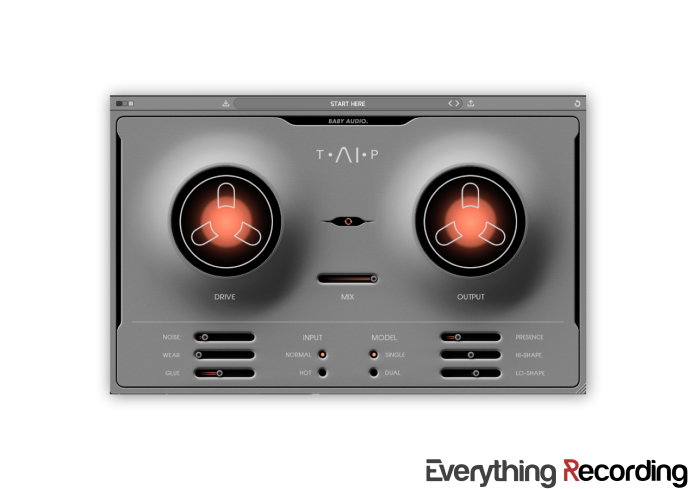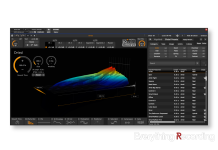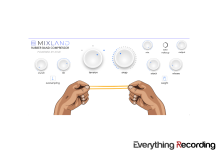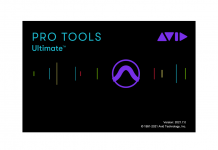Some say Artificial Intelligence will eventually destroy humanity. What you may not realize is AI can already destroy audio (in a good way). Meet TAIP, BABY Audio’s latest tape saturation plugin that incorporates AI to shape your tracks in ways not possible with conventional plugins.
Buzz Words
Understandably, as technology advances, companies will apply unrelated concepts to products to generate hype. Do we truly need a smart toilet? Probably not. For years, machine learning and AI have been slowly creeping into press releases that come across my desk. Marketing departments love using impressive terms that the populace might not fully understand to juice up a product. With that being said, I go into this review cautiously.
Please don’t take the rant above as a knock to the company. BABY Audio acknowledges the industry overuses this term, but they pinky swore to me that they’re using AI for an actual purpose (and we in “the biz” take that VERY seriously). Additionally, TAIP just happened to be the first plugin I set out to review that used AI in a way other than to analyze your mix (iZotope Neutron and Ozone).
Quasi AI
To understand how BABY Audio incorporated AI into TAIP, we have to go back to development. Traditionally, AI is used within the plugin to analyze your tracks and estimate how it will process your audio. This approach is not how TAIP utilized the increasingly ubiquitous technology. Instead, they brought AI in to analyze the “sound” of analog tape. By running dry audio versus tape saturated signals, the neural network figures out what gives audio that “tapey” quality. BABY Audio then took those learnings and applied them to TAIP’s processing algorithm. So yes, it’s AI-derived but doesn’t use it on the fly. I think this approach will start becoming more of the norm in the next several years.
Hey! It Looks Like a Cassette Tape!
It seems over the last few plugins; BABY Audio has begun to get its look. Of course, there are several different skins to choose from, and they look great. My only issue is with the heavy use of shadows. I’ve noticed them getting increasingly more and more pronounced, and this version has started messing with my eyes. I wish the bulge around the spools were less pronounced.
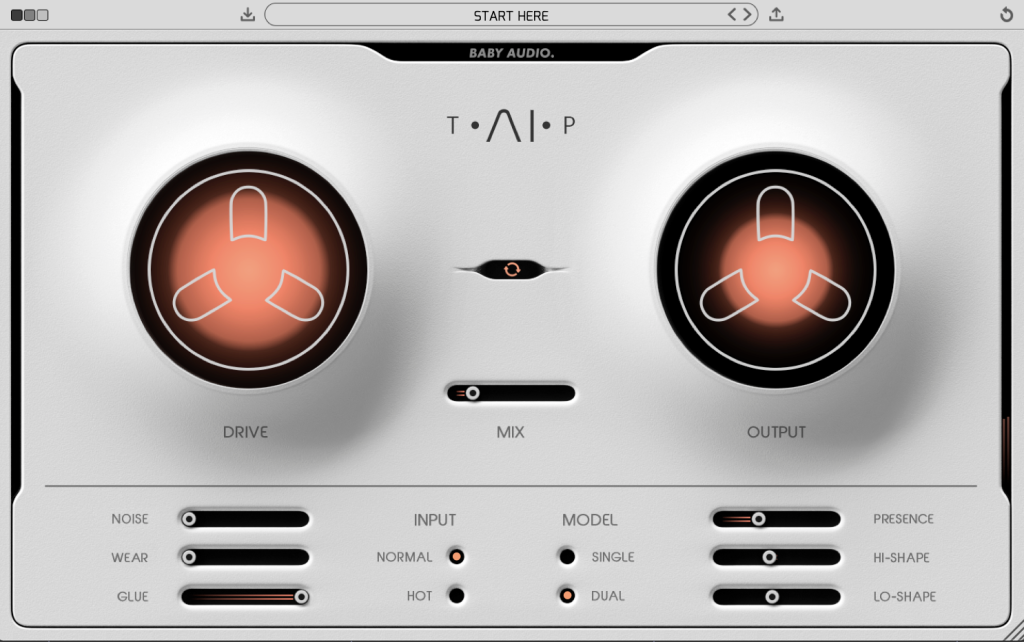
BABY Driver
As with all BABY Audio plugins, controls are simple. Want more saturation? Use the drive. Compensate for the volume change with the Auto Gain button in between the Drive and Output. Or you can dial it yourself with the Output Blending sits right in the middle as well with the Mix control. The bottom section has more creative tools with Noise and Wear. Noise will throw a little (or a lot) of hiss into the signal, and Wear combines wow, flutter, and a change in frequency curve to flange the sound in very unorthodox ways. With Wear engaged, the Mix slider becomes dual-purpose and blends saturation with the flange. The crazy part about using the slider is even just slightly moving the blend knob renders very different effects. So be advised, don’t go leadfoot with the blend or you’ll miss out. I feel like I hear pieces of the Wear effect in one of BABY Audio’s earlier plugins (and my top five plugins of all time) SPACED OUT (Review HERE).
Burn BABY, Burn
Headroom was a crucial aspect of tracking with analog tape. When audio is pushed a little harder through tape, a compressor-like artifact comes through. The Glue section of TAIP reproduces this quality but in a more controllable way. You can use it to round out your tracks or as a straight-up dynamics control tool. Additionally, BABY Audio doesn’t just do subtle (although it can). The Input and Model controls introduce options for downright burning down your signal. The Hot button pushes more input while the Dual adds another stage of saturation into the mix.
TAIP offers more tailored options to push audio in very specific ways. Hi-shape and Lo-shape sliders determine just how much saturation to push into each frequency band and the Presence can bring back brightness that tape saturation sometimes takes off the end. As always, the controls are laid out extremely simple and straightforward.
I’ll Be Honest About TAIP
At first, I wasn’t big on this plugin. I felt it dealt with audio too heavy-handed and worked more as a one-trick pony, but this lends to my approach to reviewing plugins. Sometimes you see reviews come out way after a plugin is released. This is because I want to give products a fair shake. Although this is not directly related to the plugin, I’ll let you in behind the scenes at Everything Recording. We do not care one iota about analytics, hype, and monetizing content. We don’t have to be the first to release a review and it is this approach that benefits you, the reader. I could have easily posted a “faux outrage review” (you all know who they are) where I played with the plugin for five minutes and posted about it. Instead, I used it for a few months and actually learned the plugin.
It was at this point where I realized this plugin is not a normal BABY Audio knob turner. There is a lot of subtlety in between the dB movements of this plugin. One control will completely change the reaction of a previously tuned value. If you give TAIP a little more care and attention, it will create magic. So I started more lightly turning knobs and learning how one set of controls relates to another. Sure, you will get some cool effects if you just start cranking knobs, but the secret to TAIP is in the subtle. In small doses, tracks would start getting dimension and movement. And just like that, I started reaching for TAIP more and more.
Punch List
In getting to know TAIP as much as I have, I’ve learned there are some features that it really needs to become that “one” plugin you reach for when you want that analog sound. I wish it had high and low-pass filter sliders. A plugin that is designed to also give lo-fi sounds needs a more aggressive solution to rolling off frequencies. Also, I really wanted the Wear to have its own mix slider so I could separately tailor the flange sound with the saturation. Lastly, I wish the compressor would work as a ducker like on other BABY Audio plugins but this time, duck the blend of the saturation into the signal.
Final Thoughts
Like a marriage, TAIP takes a little more involvement and time than the other BABY Audio plugins to truly master it; but like a good marriage, it pays off if you put that time in. I can’t think of another plugin that quite does with TAIP does to tracks. This is just another stellar example of BABY Audio’s ascent as one of Everything Recording’s favorite plugin developers.
Price: (at time of review) $39.00 (MSRP $69.00)
Please consider purchasing from our Affiliate Link. It doesn’t cost you any extra and helps keep the lights on at Everything Recording HQ.
- Easy to use
- Pleasing saturation
- Separate Blend knob for Wear and Saturation



